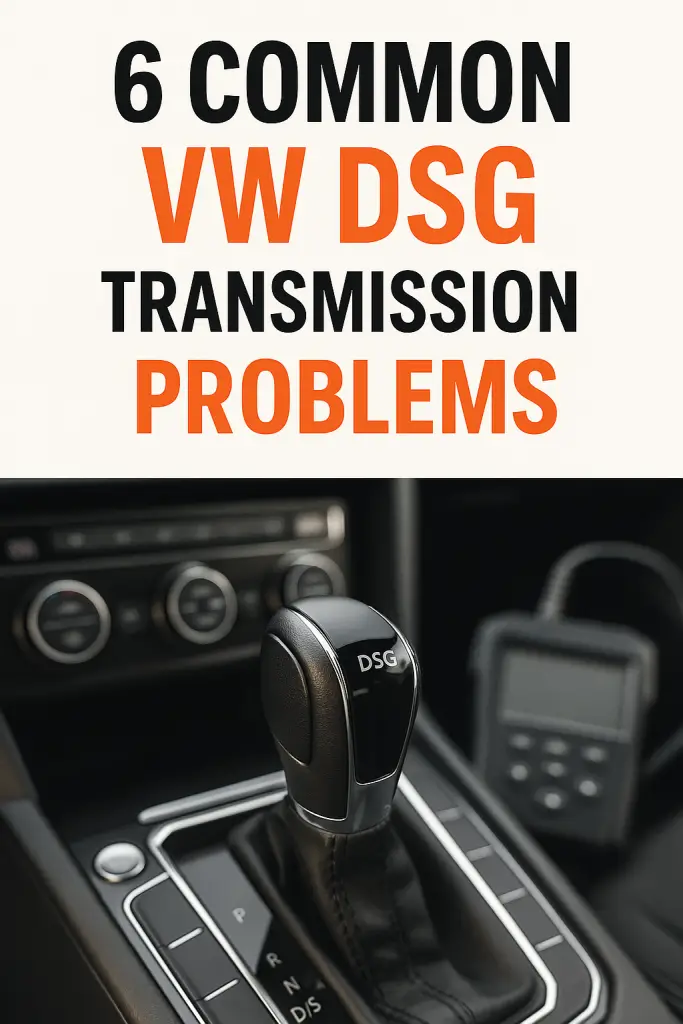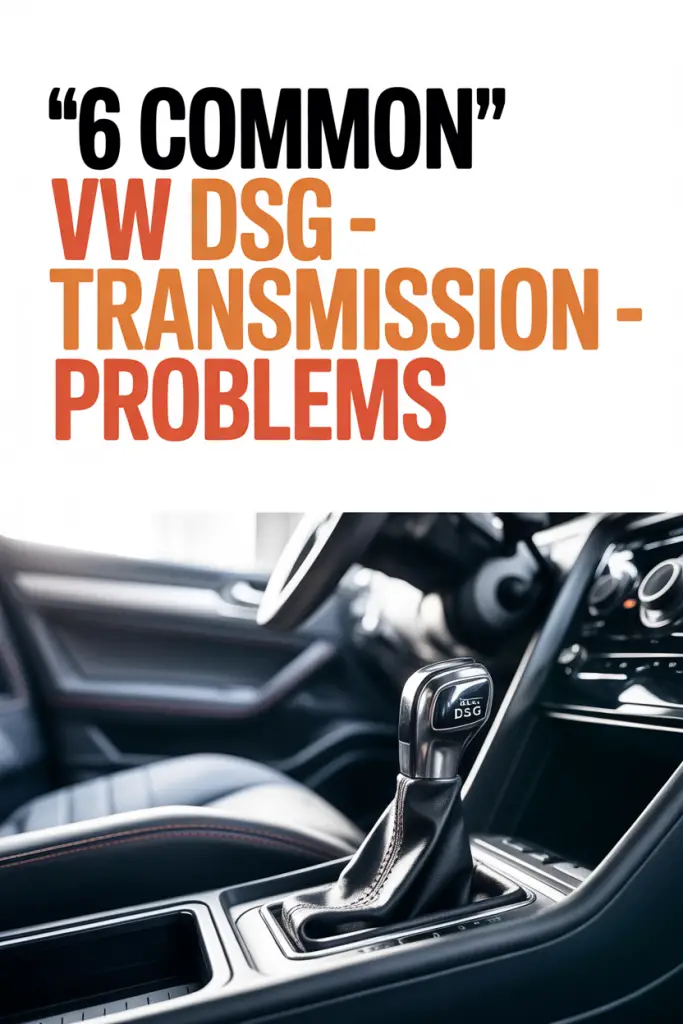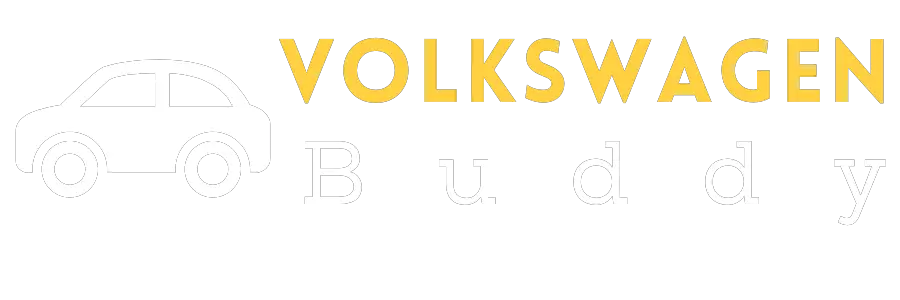What is VW DSG Transmission?

(And Why It’s Such a Game-Changer for Drivers Like Us)
Let’s Talk Gearboxes
If you’ve ever sat in a Volkswagen and felt the gear changes happen so quickly you almost doubted physics, you’ve probably experienced the DSG transmission. It’s one of those things you don’t think about until you do—and then you can’t stop raving about it.
I remember my first time in a VW Golf GTI with DSG. The salesman casually told me, “Just tap the paddle and feel it shift instantly.” I did. My jaw dropped. No hesitation, no lurch—just bam, the next gear was in, and we were flying. That’s when I knew this wasn’t your everyday automatic gearbox.
So, whether you’re curious because you’ve seen DSG in car specs, or you’re wondering if it’s worth getting, let’s break it down in plain English. By the time we’re done here, you’ll feel like you’ve been driving DSG for years.
What Does DSG Even Mean?
DSG stands for Direct-Shift Gearbox. It’s Volkswagen’s version of a dual-clutch transmission—a clever system that combines the best parts of a manual and an automatic.
In simple terms:
- Automatic convenience – No clutch pedal, no constant gear shifting.
- Manual performance – Quick, crisp gear changes that feel sporty.
Instead of one clutch like in a traditional manual, DSG has two clutches:
- One clutch handles odd-numbered gears (1, 3, 5, 7).
- The other clutch handles even-numbered gears (2, 4, 6).
The magic? While you’re driving in one gear, the next gear is already pre-selected. When it’s time to shift, the DSG swaps clutches in milliseconds. Result: lightning-fast shifts without power loss.
How the DSG Transmission Works (Without the Tech Jargon Overload)

Alright, picture this: you’re in 3rd gear. In a regular gearbox, when you shift to 4th, there’s a slight delay—clutch disengages, gear changes, clutch re-engages. With DSG, 4th gear is already waiting in the wings.
Here’s the step-by-step magic show:
- You’re driving in one gear (let’s say 3rd).
- The second clutch already has the next gear (4th) prepped.
- Shift happens in ~0.2 seconds.
- You barely notice it—just smooth, continuous acceleration.
FYI: That’s faster than most humans could ever shift manually. Even pro racers would be jealous.
Why Enthusiasts Love DSG (and Why Some Don’t)
Like all good things in the car world, DSG has its lovers and haters. Let’s look at both sides.
Pros of VW DSG
- Lightning-fast gear changes – Keeps you in the power band for max acceleration.
- Fuel efficiency – Especially in 7-speed versions, it can be more economical than a traditional auto.
- Sporty feel – Paddle shifters give you control without the hassle of a clutch pedal.
- Smooth in traffic – Acts like an automatic when you just want to relax.
Cons of VW DSG
- Maintenance costs – DSG fluid changes are crucial and can be pricey.
- Low-speed hesitation – Some drivers notice slight lag in stop-start traffic.
- Not as “raw” as a manual – Purists miss the full manual experience.
IMO: If you want everyday comfort and weekend fun, DSG hits a sweet spot. But if you live for heel-and-toe downshifts, you might still prefer a manual.
DSG vs Traditional Automatic: What’s the Difference?
A lot of folks confuse DSG with a standard automatic, but they’re worlds apart.
| Feature | DSG Transmission | Traditional Automatic |
|---|---|---|
| Gear Change Speed | Extremely fast (milliseconds) | Noticeable delay |
| Fuel Efficiency | Often better | Varies |
| Driving Feel | Sporty, connected | Smooth, relaxed |
| Maintenance | More specific (fluid changes) | Usually simpler |
| Technology | Dual-clutch | Torque converter |
Bottom line: DSG is like the sports car version of an automatic.
Popular VW Models with DSG Transmission
If you’re shopping for a VW, chances are you’ll see DSG in the spec sheet. Here are some common ones:
- VW Golf GTI / Golf R – Performance hatchbacks where DSG really shines.
- VW Passat – Smooth shifting for long-distance comfort.
- VW Tiguan – SUV practicality with sporty gear changes.
- VW Jetta GLI – Sporty sedan with punchy acceleration.
And here’s the kicker: Audi, Skoda, and SEAT (Volkswagen Group brands) also use variations of DSG under different names like S tronic.
Maintenance Tips for VW DSG Owners
Owning a DSG isn’t just “drive and forget.” If you want it to last, follow these golden rules:
- Regular fluid changes – Every 40,000 miles (or as recommended).
- Avoid excessive creeping – Dual clutches don’t love stop-and-go crawling.
- Let it warm up – Especially in cold weather.
- Don’t skip servicing – Small issues can turn into expensive repairs.
Pro tip: Many DSG issues stem from skipped maintenance. Treat it right, and it’ll treat you right.
Common DSG Problems (and How to Spot Them)
Even the best tech isn’t perfect. Here are a few issues DSG owners sometimes report:
- Juddering or shuddering when accelerating – Could be worn clutch packs.
- Delayed engagement – Selector in “D” but no immediate movement.
- Flashing gear indicator – Often signals a transmission control module (TCM) fault.
If you spot any of these, get it checked ASAP. Ignoring them can cost you big time.
Is DSG Right for You?
Here’s my quick litmus test:
- Do you want sporty performance without a manual clutch? ✔
- Do you drive in mixed city/highway conditions? ✔
- Are you okay with regular maintenance costs? ✔
If you’re nodding along, DSG might be your perfect match.
Conclusion: My Two Cents
The VW DSG transmission is a brilliant blend of performance, efficiency, and convenience. It’s not flawless, but it offers something few gearboxes do—a driving experience that’s both relaxed in traffic and thrilling on open roads.
Sure, it needs a little extra care, but then again, so does anything worth keeping long-term (cars, relationships, espresso machines—you name it).
If you ever get the chance, test drive a VW with DSG. You might just join the club of drivers who can’t stop talking about how buttery-smooth and ridiculously quick it shifts.
So, what do you think? Ready to let a DSG gearbox show you how fast shifting can really be?


![Can Headrest Of 2015 Volkswagen Come Off [How To Fix It Instantly]](https://volkswagenbuddy.com/wp-content/uploads/2024/05/can-headrest-of-2015-volkswagen-come-off-how-to-fix-it-instantly_4542-768x531.jpg)
![1997 Volkswagen Vr6 Engine Id Code List [Clarified]](https://volkswagenbuddy.com/wp-content/uploads/2024/05/1997-volkswagen-vr6-engine-id-code-list-clarified_4190-768x531.jpg)
![1997 Volkswagen Jetta Alarm Won’T Shut Off [With Solution]](https://volkswagenbuddy.com/wp-content/uploads/2024/05/1997-volkswagen-jetta-alarm-wont-shut-off-with-solution_4490-768x531.jpg)
![Herbie Volkswagen Cartoon Taking Off [Step-By-Step Fixes]](https://volkswagenbuddy.com/wp-content/uploads/2024/05/herbie-volkswagen-cartoon-taking-off-step-by-step-fixes_4545-768x531.jpg)
![1998 Volkswagen Beetle Alarm Keeps Going Off [Easy Fixes!]](https://volkswagenbuddy.com/wp-content/uploads/2024/05/1998-volkswagen-beetle-alarm-keeps-going-off-easy-fixes_4491-768x531.jpg)